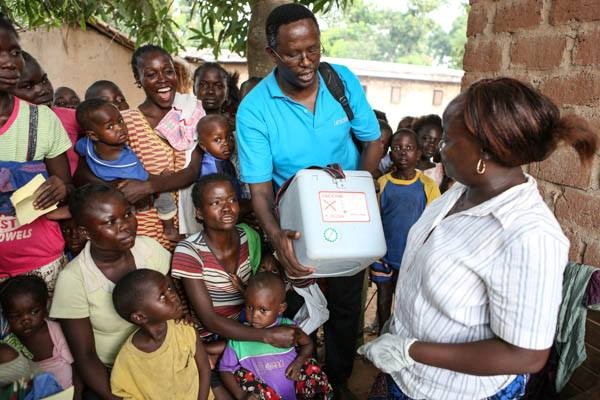United Efforts in Central Africa Tackle the Polio Outbreak
Possibility of undetected circulation

An emergency response strategy has been introduced across central Africa to stop the transmission of poliovirus by the end of September 2014, in line with the goals set by the Polio Endgame Strategic Plan 2013 – 2018.
This drive comes with the onset of two cases of wild poliovirus type 1 (WPV1) reported in Cameroon’s Est province on the 1st and 9th of July 2014, close to the border with the Central African Republic where there has been conflict and insecurity throughout 2014. The 5-year old girl and 20-month old boy affected are both refugees from the Central African Republic who had been living in Cameroon for the past three months. Both children had been immunized with two doses of OPV, so had not yet developed full immunity. These are the first cases in Cameroon since January 2014.
These cases highlight the threat of cross-border transmission in Central Africa, where ten cases have now been found in Cameroon and Equatorial Guinea since the onset of the outbreak in October 2013. Due to the circulation and influx of vulnerable refugee populations from the Central African Republic, the risk is seen to be particularly high in Cameroon.
The continuation of the outbreak implies that there are significant gaps in the surveillance system, which has been hampered by the rise in armed conflict in the Central African Republic. As most individuals show no symptoms when infected by the poliovirus, these cases imply that undetected circulation in both Cameroon and the Central African Republic cannot be ruled out.
To address the risk, the ten countries within central Africa are working together to stop transmission. At the beginning of July, the Technical Advisory Group met in the Democratic Republic of the Congo, bringing together experts on epidemiology, public health and communications to produce an emergency action plan to address the challenges currently faced to preventing transmission in this sub-region.
Central Africa poses a distinct threat to eradication efforts due to low population immunity, conflict and insecurity, poor surveillance, population movements across borders and low quality immunization programmes. The emergency action plan outlines the steps interrupting WPV1 transmission by the end of September by identifying and maximising opportunities for immunization, reducing the risk of spread, and maintaining immunization, surveillance and importation preparedness plans.
Despite difficulties in accessing children for immunization in the Central African Republic, the emergency action plan outlines the aim to create a buffer zone’ of immunity along the border with Cameroon to prevent further spread of the virus with population movements. With a further 30,000 refugees expected to enter Cameroon in the coming months, this is crucial to protect these people who have received very little support since the worsening of the conflict in December 2013. Mop-up immunization activities are being finalized to deliver short interval additional doses, a pioneering strategy which allows children to be protected in a matter of days rather than the standard 4 weeks. There will also be work to sensitize communities on the need for immunization, active detection and reporting.
During September and October there will be synchronized immunization activities across West and Central Africa. The wide scope of these plans will enable a much more comprehensive coverage of children, especially those made accessible as they cross borders to avoid conflict. In both Cameroon and the Central African Republic, strong coordination with NGOs and health organisations has made all the difference to enabling campaigns. These relationships will continue to be strengthened in the coming months.
With immunization activities globally being reinforced wherever access to children is possible, the stemming of the central African outbreak is crucial to enabling the end of WPV1 on the continent by the end of 2014. With only 5 cases in Nigeria this year compared to 35 by August in 2013, and most cases in Afghanistan coming from population movements from Pakistan, the impact that global efforts are having is notable. However, while polio remains in enclaves in conflict affected areas, eradicating the risk of outbreaks will be a major challenge; one that the Global Polio Eradication Initiative remains committed to meeting head on.













